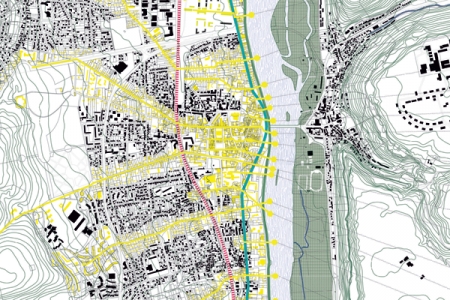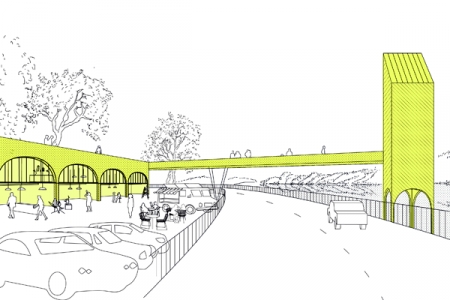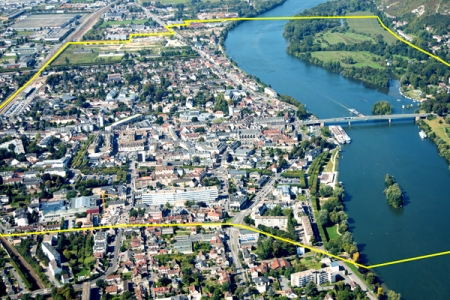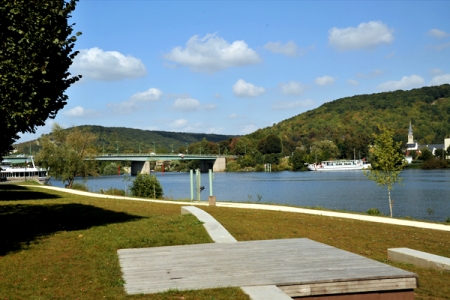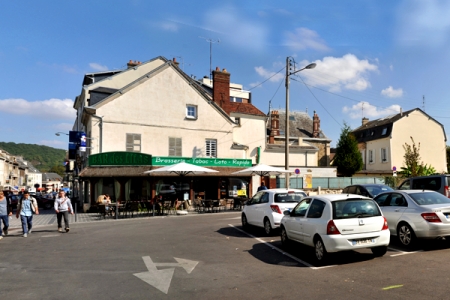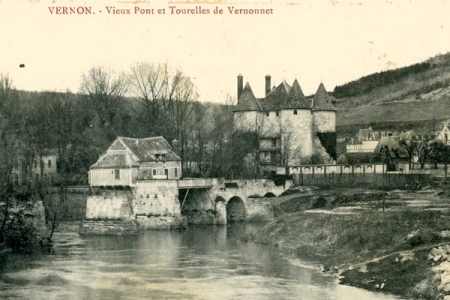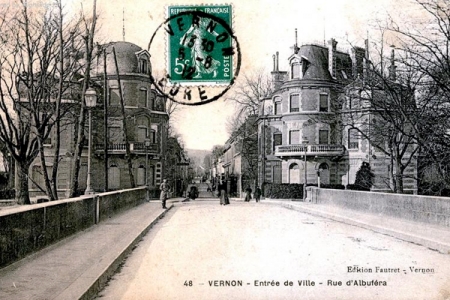Insécable distance
Vernon (FR) – Winner
TEAM DATA
Team Representative: Adrien Rerat (FR) – architect; Associate: Louise Le Penndu (FR) – architect
27bis rue Claude Lorrain, 75016 Paris – France
+33 7 77 07 34 31 – louise.lepenndu@gmail.com
See the complete listing of portraits here
See the site page here

L. Le Penndu & A. Rerat
INTERVIEW
Click on the images to enlarge
1. How did you form the team for the competition?
Our various experiences and complementary skills lead us to team up for Europan, motivated by the idea to combine our knowledge in order to bring out new ones. This contest was the opportunity to take the time to search, explore and experiment an architectural and urban project as a responsible creation, conscious of our contemporary constraints.
2. How do you define the main issue of your project, and how did you answer on this session main topic: Adaptability through Self-Organization, Sharing and/or Project (Process)?
The reflection began on the regeneration of a town marked by mobility. Consequently, it is about promoting the ability for Vernon to generate relations and exchanges. Ford-town, bridge-town, station-town, Vernon is a passing town crossed by numerous physical cuts: river, bank and rails. The unity of the city implies appropriating the river again.
The urban project proposes the inhabitants to take over the fluvial space again and become riverside residents in a literal sense. The urban transformation is therefore structural, functional and social: structural, through the creation of a new network of movements linking the different neighbourhoods to the Seine River; functional, through the development of reconverted wildernesses and newly created activities; and social, through the integration of civil society and residents taking over the fluvial space.
3. How did this issue and the questions raised by the site mutation meet?
We quickly agreed on a simple yet strong concept, bringing back architecture inner specificity: to consider man as the main focus.
4. Have you treated this issue previously? What were the reference projects that inspired yours?
Our respective diploma projects or professional experiences in France and abroad have constantly led us to question the changing nature of our world in order to successfully act and anticipate the future. We harvested our inspiration and references from the local architectural language of the city of Vernon, the Mill and the pontoons.
5. Today –at the era of economic crisis and sustainability– the urban-architectural project should reconsider its production method in time; how did you integrate this issue in your project?
With the increasing withdrawal of state funding in the local sphere and the consideration of a short political time, we decided to offer a collection of instantly operational projects. Just like theater trestles, structures are implanted when needed thus having potential funding. Integrating the temporal context with a collective and participatory dimension, the unfrozen project is written with the actors. The idea of time is a central background for these ready-to-be-made projects. Their collective dimension is envisioned to be enriched by the participation of local actors.
6. Is it the first time you have been awarded a prize at Europan? How could this help you in your professional career?
For both of us, it was the first time we have taken part to Europan. We feel really lucky to be winners in Vernon and we only start to realize what it means. This recognition of our work motivates us to carry on our explorations, to deepen our research and to work together in order to participate in reinventing the architecture of tomorrow.
Our project is not a finished object, but the material to start a debate on urban issues in Vernon with every actors of the city. Thus, we will develop our ideas, enrich them, and eventually have the chance to realize them.
